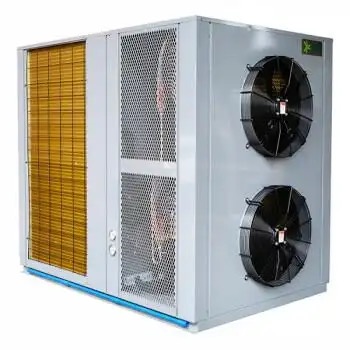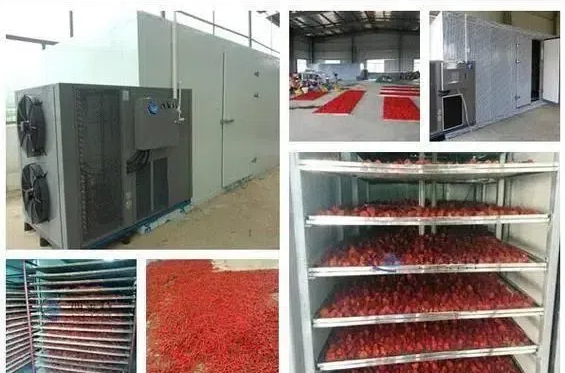
Content Menu
● What is a Food Dehydrator?
● How Does a Food Dehydrator Work?
● Advantages of Using Heat Pump Technology
● Why Choose a Black Heat Pump Dryer?
● Applications of Food Dehydrators
● Popular Foods for Dehydration
● Key Features to Look for in a Food Dehydrator
● Maintenance Tips for Your Food Dehydrator
● Troubleshooting Common Issues
● Conclusion
● Frequently Asked Questions
>> 1. What types of foods can be dried using a food dehydrator?
>> 2. How long does it take to dehydrate food?
>> 3. Is it necessary to pre-treat foods before dehydrating?
>> 4. Can I use my black heat pump dryer for other purposes?
>> 5. How do I know when my food is fully dried?
Food dehydrators are essential tools for preserving food, enhancing flavors, and extending shelf life. In this article, we will explore the various aspects of food dehydrators, particularly focusing on those that utilize heat pump technology. This technology is revolutionizing how we dry food, making it more energy-efficient and environmentally friendly. We will also discuss the advantages of using black heat pump dryers in food processing.

What is a Food Dehydrator?
A food dehydrator is an appliance that removes moisture from food to aid in preservation. By reducing the water content, it inhibits the growth of microorganisms and enzymes that cause spoilage. This process can be applied to fruits, vegetables, meats, and herbs, making it a versatile tool in both home kitchens and commercial food production.Food Dehydrator
How Does a Food Dehydrator Work?
Food dehydrators work by circulating warm air around the food items placed inside them. The heat causes moisture to evaporate, while the airflow helps to carry away the moisture-laden air. This process can take several hours depending on the type of food and the desired moisture level.The drying process typically involves several stages:
1. Preparation: Foods are washed, peeled (if necessary), and cut into uniform pieces to ensure even drying.
2. Heating: The dehydrator heats the air, which is then circulated around the food.
3. Evaporation: Moisture evaporates from the food into the circulating air.
4. Cooling: Once dried, foods may need to cool down before storage.
Advantages of Using Heat Pump Technology
Heat pump technology is becoming increasingly popular in food dehydrators due to its numerous benefits:
1. Energy Efficiency: Heat pump dryers consume significantly less energy compared to conventional drying methods. They recycle heat within the system, leading to lower operational costs.
2. Consistent Drying: These dryers provide a uniform temperature throughout the drying chamber, ensuring that all food items are dried evenly.
3. Nutrient Preservation: The lower drying temperatures used in heat pump dryers help preserve vitamins and minerals better than traditional methods.
4. Reduced Environmental Impact: By using less energy and maintaining lower temperatures, heat pump dryers contribute to a smaller carbon footprint.
Why Choose a Black Heat Pump Dryer?
Black heat pump dryers are not only aesthetically pleasing but also highly functional. Their sleek design can complement modern kitchen styles while providing efficient drying capabilities. Moreover, black appliances tend to show less dirt and fingerprints compared to lighter colors, making them easier to maintain.
Applications of Food Dehydrators
Food dehydrators have a wide range of applications across various industries:
1. Home Use: Individuals use dehydrators for snacks like fruit chips, jerky, and dried herbs.
2. Commercial Use: Restaurants and food manufacturers utilize dehydrators for bulk drying of fruits, vegetables, and meats.
3. Pharmaceuticals: Certain medications require dehydration processes that can be efficiently handled by specialized dehydrators.
4. Pet Treats: Dehydrators can also be used to create healthy treats for pets by drying fruits or meats.
Popular Foods for Dehydration
Some popular foods that are commonly dehydrated include:
1. Fruits: Apples, bananas, strawberries, mangoes, and pineapples can be sliced and dried for snacks or added to cereals.
2. Vegetables: Tomatoes, bell peppers, zucchini, and carrots can be dried for use in soups or stews.
3. Meats: Jerky made from beef or turkey is a popular high-protein snack.
4. Herbs: Basil, oregano, thyme, and rosemary can be dried for long-term storage.

Key Features to Look for in a Food Dehydrator
When selecting a food dehydrator, consider the following features:
1. Temperature Control: Adjustable temperature settings allow for optimal drying conditions for different types of food.
2. Airflow Design: A good airflow design ensures even drying without the need for rotating trays.
3. Capacity: Depending on your needs, choose a model with sufficient capacity to handle your drying requirements.
4. Timer Functionality: A timer can help you set specific drying times so you don’t have to monitor the process constantly.
5. Ease of Cleaning: Look for models with removable trays that are dishwasher safe or easy to wipe down.
Maintenance Tips for Your Food Dehydrator
To ensure your food dehydrator operates efficiently:
1. Regular Cleaning: Clean trays and surfaces after each use to prevent cross-contamination.
2. Check Seals: Ensure that door seals are intact to maintain temperature and airflow.
3. Inspect Heating Elements: Regularly check heating elements for any signs of wear or damage.
4. Store Properly: When not in use, store your dehydrator in a dry place away from direct sunlight.
Troubleshooting Common Issues
Even with proper maintenance, you may encounter some common issues with your food dehydrator:
1. Uneven Drying: If some foods are drying faster than others, check if they are cut uniformly or if there’s an airflow blockage.
2. Long Drying Times: Ensure that the temperature setting is appropriate for the type of food being dried; higher moisture content may require longer times.
3. Odors or Tastes Transference: Clean your dehydrator thoroughly between uses to avoid flavors transferring between different foods.
Conclusion
Food dehydrators are invaluable tools for preserving food while maintaining its nutritional value. The advent of heat pump technology has further enhanced their efficiency and effectiveness. Black heat pump dryers stand out not only for their performance but also for their modern design, making them an excellent choice for both home users and commercial enterprises.Investing in a high-quality food dehydrator can lead to significant savings on food costs while allowing you to enjoy healthy snacks year-round. With their versatility and efficiency, these appliances are essential for anyone looking to enhance their culinary skills or reduce waste in their kitchen.

Frequently Asked Questions
1. What types of foods can be dried using a food dehydrator?
You can dry fruits, vegetables, meats (like jerky), herbs, and even flowers using a food dehydrator.
2. How long does it take to dehydrate food?
The time required varies based on the type of food and its moisture content but typically ranges from 4 to 12 hours.
3. Is it necessary to pre-treat foods before dehydrating?
Pre-treating foods like apples or bananas with lemon juice can help prevent browning and preserve flavor.
4. Can I use my black heat pump dryer for other purposes?
Yes! Besides drying foods, you can use it for other applications such as drying flowers or making potpourri.
5. How do I know when my food is fully dried?
Properly dried foods should be leathery or brittle without any moisture pockets remaining inside.












